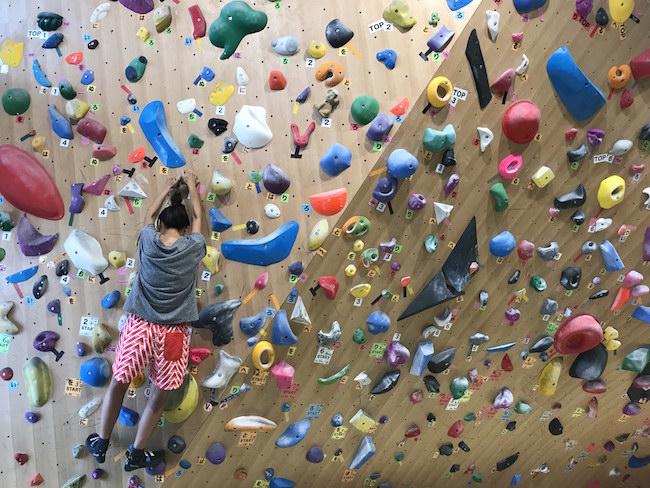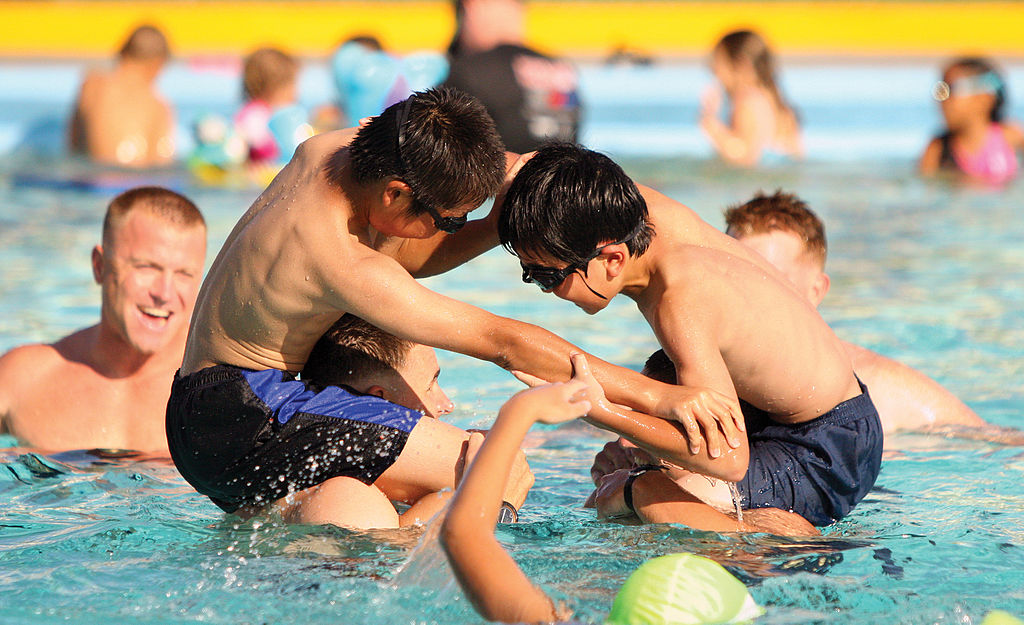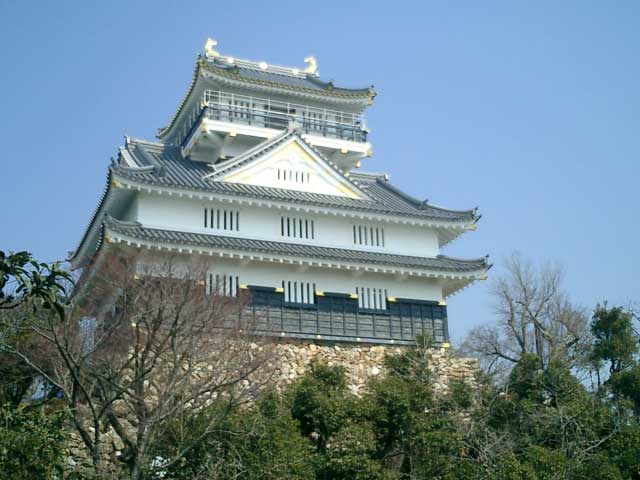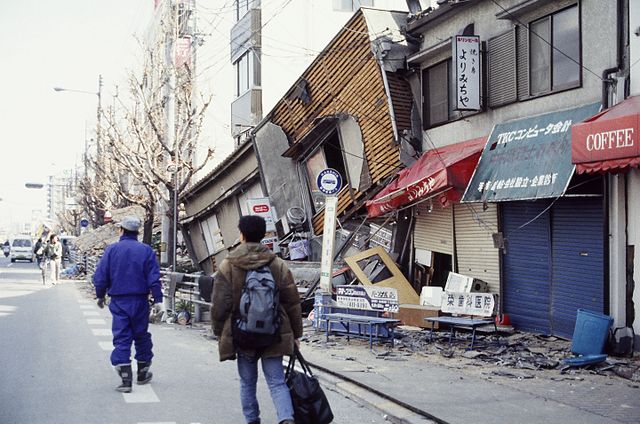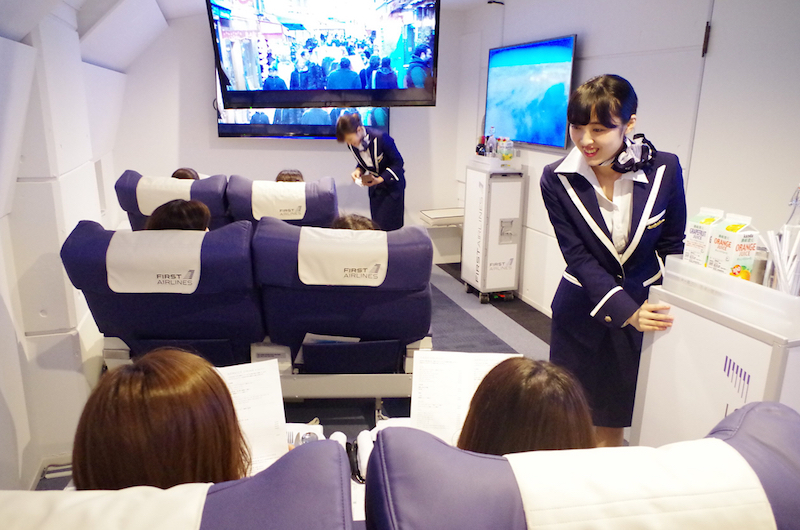Jun 26, 2018
Rock (Climbing) And Roll – Bouldering in Nagoya

Every now and again something pops up in the zeitgeist that comes right out of left field. Some of these things are fads that slip away as quickly as they came (remember twerking? No, probably not), but some things just seem to not only hang around, but absolutely explode.
One of those things that is hanging around – quite literally – is bouldering in Japan. As one of the new events included in the Tokyo 2020 Olympics, this sport – in which competitors climb indoor rock faces – is constantly being talked about and is never off of the TV, making stars of Akiyo Noguchi, Miwa Oba and Risa Ota. And don’t let their resemblance to pop idols fool you, these women, able to perform pull-ups with just index fingers, are rock hard.
There have been a few bouldering places in Nagoya for a while, but with the explosion of popularity has come an expansion of bouldering gyms. Below is a choice few
Bouldering House Knot
I’m starting with Bouldering House Knot for little other reason than it is the hall to which I go. In the slightly hipsterish area of Endouji, Knot kind of stands out amongst the bistro cafes and upmarket restaurants and hand-crafted leather shops, and is the newest climbing gym on the block.

It’s a pretty small gym, but it has a nice variety for climbs, from very simple to some pretty dramatic overhangs, meaning it’s good for all ability levels. They are also foreigner friendly, with admission forms in English as well as Japanese.
- Where: Nishi-ku, Nagono, 1 Chome−35−13 (map)
- Website: bouldering-knot.com
- Admission: First time (including lesson and shoe rental) 3,500 JPY; all day 2,000 JPY; two hours 1,700 JPY; shoe rental 400 JPY
Pinnacle 2
Pinnacle has a number of climbing gyms in the area. A friend of mine raves about the gym in Obu, but the Sakae branch, though a bit smaller, is most accessible, just a couple of minutes walk from Yabacho subway station.
There is a wide variety of climbs, with some really simple walls, and others that would be ideally suited for more expert climbers
- Where: Naka Ward, Sakae, 5 Chome−25−17 Mega Building 1F (map)
- Website: pinna2.com
- Admission: Monday to Friday: all day 1,700 JPY, two hours 1,200 JPY; weekends and holidays: all day 2,100 JPY, two hours 1,500 JPY; first time registration 1,000 JPY
Thumbs Up
This is the main bouldering gym in Nagoya, and as far as I can tell, it’s the longest running. Over in Kamimaezu, it is particularly foreigner friendly (it advertised with NAGMAG some years ago and has an English language website) and is welcoming for all levels.
Thumbs Up is huge, with six walls of varying difficulty. There is a massive climb outside (pictured) as well as a wall just for children, meaning that you can bring your kids along too, and get all envious as they scamper up the wall with ease after you struggled all day.
- Where: Naka Ward, Fujimicho, 8−8 OMC Building (map)
- Website: omcwall.sakura.ne.jp
- Admission: All day 2,100 JPY, half day 1,700 JPY (week days only); first time registration 1,000 JPY
Play Mountain
If you are not the athletic type but your kids are, Play Mountain in Moriyama ward is the ideal choice as it has kids classes and is extremely family friendly. Not to say that it is only for children, as it has challenges for climbers of all ages.
Play Mountain has loads of variety in its climbing walls with a top rope area, overhangs, boulders and the unusually shaped ‘Potato Rock’.
- Where: Moriyama Ward, Moritaka, 3 Chome−1807 (map)
- Website: playmountain.co.jp
- Admission: Visitor: all day 3,000 JPY; Member: All day week day 1,900 JPY, weekends and holidays 2,200; 18:30-close 1,800 JPY (weekends only)
By Mark Guthrie
Photos: Mark Guthrie (Own work)
Photo: via http://pinna2.com/gallery/s201511003.jpg
Photo: via http://omcwall.sakura.ne.jp/english/pg106.html
Photo: via http://playmountain.co.jp/nagoya/guide.html
Jun 26, 2018
Cupcakes or Muffins? Why Not Do Both?
Whether you are throwing a small party, want something to pair with your coffee, have kids who deserve a tasty treat, or (like me) you have insatiable sweet tooth that demands to be fed, cupcakes and muffins are the perfect indulgence.
Japan loves a these delicious delicacies in that they manage to combine sugary sweetness with the ultimate in kawaii design in the most fashionable of stores.
So, if you, like me, have decided ‘to hell with the beach bod’ for another summer, I implore you to check out these delicious purveyors of sweet, sweet goodness in our fair city of Nagoya.
London Cupcakes
I used to work directly across the road from the Kakuozan branch of London Cupcakes, and not once did I have the requisite willpower to walk past on my way home without popping in.
The original branch in Kanazawa was opened by Brit Kristy in time for the 2012 Olympics (hence the London connection), and London Cupcakes pride themselves on mixing traditional British home baking with original light, fluffy, buttercream. Their cupcakes are all baked fresh in the shop every day and they constantly change their menu to incorporate seasonal flavors and events.
- Where: Kanazawa City, Sainen 4-2-6 (map); Chikusa-ku, Nagoya
Himeikedori 3-25-2 (map) - Website: londoncupcakes.jp
To Go Kuramumichi
While London Cupcakes plays on the cutesy side of things, To Go keeps it rustic and authentic with their cupcakes and muffins. A sister store to the funky as heck Mitts Coffee Stand, there is very much an adherence to nature in their ingredients, with locally sourced, in season fruits, which is unsurprising as store owner Abe-san was brought up in the countryside.
Despite the name, there are a few stools and a bar at which you can munch on your cake and sip one of their fantastic drip coffees.
And for those of you with extreme sweet teeth, you can even try one of their cream and fruit sandwiches. Although, I have to say, that’s one step too far for me.
- Where: Higashi-ku, Tsutsui, 3 Chome-18-21 Mezorie road 1F (map)
- Website: instagram.com/to_go_nagoya
By Mark Guthrie
Photo: via http://www.londoncupcakes.jp/en/gallery/ -Modified
Photo: via instagram.com/to_go_nagoya -Modified
Jun 26, 2018
Hiroshima Port Dream Fireworks

Summer in Japan just doesn’t quite work without taking in at least one fireworks show. Hiroshima has several, but the two big crowd pleasers are the Miyajima show in August, and what is called the Yumehanabi, or “Dream Fireworks” from Hiroshima Port in the Ujina district.
Formerly held directly in front of the Prince Hotel at Moto Ujina, the display has shifted slightly east. Several years ago construction was finished on a massive new pier, the 10,000 ton cruise ship berth intended to welcome anticipated Chinese and other cruise ships to Hiroshima, along with crowds of tourists eager to spend their money. The Hiroshima Port fireworks show is now held on the open water in front of the pier.
The show is a knockout. With the Seto Inland Sea as its backdrop, the firework artists paint the sky with blossoms, discs, strange hats and smiley faces. Some rockets ascend invisibly, others ride a spiral of ever-widening fire before exploding with a roar you can feel in your bones. A full hour of more or less constant fireworks, with periodic brief pauses followed by crescendos that have people asking, “Is this the finale?” A silly question. Some 10,000 fireworks are launched into the air over the hour-long show, and when the final assault comes there’s no mistaking it. The entire sky south of Hiroshima city seems to be on fire for several long seconds, and the booms echo back and forth from the hills for at least as long.
Of course, you’d expect a show like this to draw a crowd, and you’d be right. The organizers estimate that, in recent years, around 430,000 people have crowded into the area around the port to get a close-up look at the display. That’s a lot of people for such a relatively confined area. There are seats available, if you have the money and connections, and you can always rent a boat. There are even private aircraft that circle over the area, if you’re lucky enough to know a pilot.
The nice thing, though, is that you can enjoy the show from many points around town, and people do. Families with balconies or rooftop terraces hold parties, people gather on bridges and riverbanks leading to the port, or rent hotel rooms facing the piers. Some even climb into the mountains surrounding the city to watch from a distance of several kilometers. I’ve enjoyed the show from a number of different locations, none of them at the waterfront, and enjoyed it immensely. So do a little thinking ahead of time, ask around a bit, and pick out a likely spot. Or, if you don’t mind crowds, go ahead and wade into the throng at the port. It’ll probably be worth it.
Additional Information
Time: Saturday, July 28, from 20:00 to 21:00.
(near) 2 Chome-16-51 Ujinanishi, Minami Ward, Hiroshima, Hiroshima Prefecture 734-0014 (map link)
Access: You can take any of the Ujina-bound buses or streetcars from Hiroshima Station, but expect full trains and long waits. As mentioned above, you’re probably better off arranging your own venue for viewing.
Admission: Free
Website: Japanese. http://www.minato-yumehanabi.com/
An excellent round-up of other local summer fireworks shows is located here: http://gethiroshima.com/features/art-entertainment/festivals/summer-fireworks-festival-guide/
Babiesan [CC BY-SA 3.0], via Wikimedia Commons
Jun 24, 2018
Dive in Kobe Places to Swim this Summer

With temperatures rising for the summer it can be easy to resort to staying inside as often as possible. Though the air conditioning at home might be necessary sometimes, for Kobe residents and visitors, there are a multitude of other ways to stay cool while also getting out of the house! Not only are there many beaches, rivers, and waterfalls for you to jump in, there are also many pool facilities for you to get your swimming fix this summer!
Whether you prefer to wade in the water with your family, practice your diving, take swimming fitness classes, or swim some laps, you won’t have trouble finding a pool that suits you.
Konami Sports Club – Mountain Location
Location: Aoyama Stand, 7-7-1 Tarumi-ku, Kobe, Hyogo Prefecture 655-0873
Features: Indoors, six 25m lanes, heated pool, fitness swimming classes available
Hours: Monday – Friday 7:00 a.m. – 11:45 p.m., Saturday 10:00 a.m. – 8:45 p.m., Sundays and Holidays 10:00 a.m. – 5:45 p.m.
Tel: (078) 753-8040
Website (Japanese): http://information.konamisportsclub.jp/004489.html
Konami Sports Club – Sannomiya Location
Location: 5-1-21 Chuo-ku, Kobe, Hyogo Prefecture 651-0087, located on the fifth floor of the complex
Features: For adults only, indoors, 25m lanes, swimming fitness lessons available
Hours: Monday – Friday 7:00 a.m. – 11:45 p.m., Saturday 10:00 a.m. – 8:45 p.m., Sundays and Holidays 10:00 a.m. – 5:45 p.m.
Tel: (078) 291-6641
Website (Japanese): http://information.konamisportsclub.jp/004090.html
Konami Sports Club – Konan Yamate Location
Location: Forest South Town, 1-5-1 Higashinada-ku, Kobe, Hyogo Prefecture 658-0011
Features: Indoors, five 25m lanes, fitness swim classes available
Hours: Monday – Friday 7:00 a.m. – 11:45 p.m., Saturday 10:00 a.m. – 8:45 p.m., Sundays and Holidays 10:00 a.m. – 5:45 p.m.
Tel: (078) 453-4471
Website (Japanese): http://information.konamisportsclub.jp/004471.html
Port Island Sports Center
Location: 6-12-1 Minatojima Naka-Machi, Chuo-ku, Kobe, Hyogo Prefecture, near Port Liner Shimin-Hiroba Station
Features: Indoors, 25m lanes and 50m lanes for the summer, heated pool, swimming lessons available
Hours: Monday – Friday 12:00 p.m. – 8:30 p.m., Weekends and Holidays 10:00 a.m. – 8:30 p.m., Closed on Wednesdays
Tel: (078)-302-1031
Website (Japanese): www.kobe-spokyo.jp/psc/
Hyogo Kenritsu Kenko Center (Hyogo Health Science Center)
Location: Sumiyoshi, Kobe, Hyogo Prefecture 658-0081, on the northeast corner of Sumiyoshi River and Route 2
Features: Indoors, eight 25m lanes, heated pool
Tel: (078) 441-2234
Hyogo Prefectural Gymnasium
Location: Hasuikecho, Nagata-ku, Kobe, Hyogo Prefecture 653-0837, near Nishidaihasuike Park
Features: Indoors, seven 25m lanes, fitness swim classes available
Tel: (078) 631-1701
By Pfc. Brianna Turner [Public domain], via Wikimedia Commons
Jun 20, 2018
Theatre Iridescence Presents Medea
HELL HATH NO FURY…
An adaptation of the Greek play by Euripides, Medea is a tale of love and revenge. It tells the story of a wife’s all-consuming desire for revenge against her unfaithful husband.Our version of this Greek tragedy is set in Japan and features a multicultural cast of seasoned actors, many of who are well known in Japanese theatre. Theatre Iridescence’s exploration of universal themes and innovative use of video projection, and subtitling will make this show a truly international and inclusive experience!
INFORMATION:
LOCATION: Aichi Arts Center, Mini Theatre (next to Oasis 21)
DATES: July 6 (Fri) 18:30, July 7 (Sat) 13:00&18:00, July 8 (Sun) 13:00&17:00
TICKETS: Student ADV (2,000 yen, requires ID), ADV (3,000 yen until July 1st), DOOR ( 4,000 yen)
HOW TO BUY TICKETS:
1) Convenience stores via TICKET PIA (Pcode:485-323)
2) Ticket Guide (8F, Nadya Park)
3) Play Guide ( B2, Aichi Arts Center, inside Art Plaza),
4) Email ( nagoyatheatretickets@gmail, requires bank transfer)
5) FROM MEMBERS OF THE CAST AND CREW!
Note: Student tickets are only available via direct contact with cast and crew or via email.
Previous Shows

Experience a look into the lives of a small English speaking multicultural community as we follow four friends in a land where chopsticks are a part of daily life, “fireblossoms” fill the sky, and nothing ever really fits. This modern musical, which combines eastern and western modern music and stunning dance numbers, is a must see!
Directed by: Jessica A. Robison
Written by: Aya Kawakami
Music by: David Freeman, Aya Kawakami, and David Dycus
Cast: Jonathon Freeman, Aya Kawakami, Jessica A. Robison, David Alcock, Lem Mauricio, Denise Hewitt, Rei, Keiko Nakahara, Yukiko Murakami, Michelle Josephine, Alisson Ninomia, Angelo Naya
Theatre Iridescence: Shining a Light on Untold Stories
 Theatre Iridescence is a multilingual, multicultural theatre company that strives to produce high quality pieces that will resonate with a wide range of audiences. Its creative director is Aya Kawakami, a singer and actor with 30 years of experience on the stage. Alongside a team of seasoned experts, all well known in the Nagoya theatre scene and beyond, Theatre Iridescence aims not only to put forth innovative work but to develop and feature new talent. In this endeavor, Theatre Iridescence aims to create real educational opportunities to those who wish to develop their creative abilities whether it be on the stage or behind the scenes.
Theatre Iridescence is a multilingual, multicultural theatre company that strives to produce high quality pieces that will resonate with a wide range of audiences. Its creative director is Aya Kawakami, a singer and actor with 30 years of experience on the stage. Alongside a team of seasoned experts, all well known in the Nagoya theatre scene and beyond, Theatre Iridescence aims not only to put forth innovative work but to develop and feature new talent. In this endeavor, Theatre Iridescence aims to create real educational opportunities to those who wish to develop their creative abilities whether it be on the stage or behind the scenes.
Email: nagoyatheatre(at)gmail.com
Website: www.theatreiridescence.com
Instagram: theatre_iridescence
Twitter: Theatre Iridescence
Facebook
Jun 15, 2018
Gifu Castle Panorama Night View

If you are looking for a cool place to spend a hot summer night I have just the spot; Gifu!
Gifu City is a mere 20 minute train ride from Nagoya, but it is generally cooler than Nagoya, although in fairness it is also colder in the winter-funny how that works, isn’t it? It stands to reason that cooler generally means evenings will be cooler still, and if you add a mountain top into the mix you could be looking at, well, let’s just say significantly cooler.
If you are looking to beat the heat, and enjoy a tremendous view of the cities of Gifu and Nagoya (and everything in between), you should check out the Panorama night view at Gifu Castle. The castle is open until 10 pm during these special summer hours and between the view and the atmosphere this quick trip out of Nagoya is a real winner.
The Panorama Night View summer hours run from mid July until the end of August. If you are truly a stalwart soul you can hike up Mt Kinka, but for the less adventuresome there is always the rope way!
Gifu Castle
First built as a fortress on the top of Mt. Kinka in 1201, Gifu Castle has a history of about 800 years. ODA Nobunaga, a famous general in Sengoku period, occupied the castle and became its master in 1567. At this time, ODA changed the name of this area from “Inokuchi” to “Gifu” and of the castle itself from “Inabayama Castle” to “Gifu Castle”. As ODA expanded his empire and unified the nation with his fresh ideas and unique politics, Gifu Castle became a bustling center of activity.
Gifu Castle Panorama Night View
July and August, until 10:00pm
Gifu Castle (google map)
Gifu Castle Website
Image by: z tanuki [CC BY 3.0], via Wikimedia Commons
Image by: By Kamonohashi02 [CC BY-SA 4.0], from Wikimedia Commons
Jun 14, 2018
Earthquake Preparedness in Japan

Japan is among the world’s most seismically active countries, which means that earthquakes are a relatively common occurrence. Small tremors are usually felt in some part of the country everyday, and there have been several big quakes in the last few years resulting in damage and deaths. While the damage was very significant, it is important to note that damage and deaths were remarkably limited.
Since a major earthquake in Kobe many years ago, Japan embarked on a mission to improve building codes and procedures. All of which were fairly effective. Even the much bemoaned walls erected to keep Tsunami waves at bay, which turned out to be much too short, did in fact hold back the waves for a time, and probably saved hundreds or thousands of lives. So while it is important to be prepared for a disaster, you should keep the danger in perspective. If you must live through a killer quake, Japan is probably the best place to do it. If you take only one thing from this article, please be pro-active and prepare your family and home for a disaster.
Preparation Pays off
Do you live in a new house or apartment?
Building standards become stricter and stricter as the years go on so a rule of thumb is that the newer the residence, the more thought has been put into earthquake resistance. Of course there’s no way of completely earthquake proofing a building, but it’s nice to know you have a little insurance. Generally, any building constructed after – 1981, when the “shin-taishin”, or New Earthquake Resistant Building Standard Amendment was enacted, should be safe enough.
Do any of your family sleep where heavy objects could drop down and trap them?
This is of particular concern for smaller residences, where you’re likely to be sleeping on a futon, close to the television in the living room. Where you have no choice but to sleep near heavy stuff, at least make sure that it’s landing near your feet. You can also use braces, available from the home center, or Tokyu Hands to brace large or heavy objects.
Are your windows earthquake resistant?
In other words, do your windows have a fine line of wires that hold them together in case they break and prevent them from shattering on the floor? This is particularly important on the upper floors where shattering glass can be a rain from above for people walking down below. There is a sticky film you can buy from the home center or Tokyu Hands to stick over the windows for this purpose.
Have you checked out the earthquake preparation corner of your local home center?
If not, you won’t have any trouble locating it today, as quakes like this morning’s one tend to snap people into action. There are things to bolt your furniture down, padding to put under the furniture to make it harder to fall down, and a whole range of items that you would need if a major earthquake prevented you from living a normal life in your home for an extended period of time.
What you will do in the event of a large earthquake?
- Where is the safest place at home?
- Where are the emergency supplies at home?
- Do you have fire extinguishers in your home and where are they?
- Where is the nearest evacuation shelter and evacuation route?
- What are the responsibilities of each householder when evacuating?
- Decide how to contact family members, and about where to meet for both a daytime and nighttime earthquake scenario.
- Put personal effects and first aid kit in a place where they are easily accessible
- Learn how to use the NTT disaster emergency dial 171
- Look into disaster information options from your mobile phone provider such as this one from Softbank, this one from au, or this one from docomo. Remember that in the event of a disaster different phones will work in different areas depending on which transmitters have been damaged.
Items to prepare for an emergency evacuation:
- By your bed: shoes (in case of broken glass), flashlight, whistle, glasses, medication
- Emergency survival bag (put in an easily accessible place known to all family members) : valuables such as cash including change, passports, foreign registration cards, credit cards, bank passbook, drivers license.
- Radio, emergency food rations, bottled water, mobile phone.
- Clothes to be used in an emergency, including gloves and small towels.
- First aid kit including medicine, band-aids, tissue paper, small scissors, tape etc.
- The emergency bag must be as light as possible for ease of carrying.
In another place in the house known to all householders;
Items to stockpile to prepare for an emergency evacuation:
- Emergency food and bottled water for three full days
- Portable cooking stove and fuel (careful to check use-by dates and safe storage)
- rope
- disposable chopsticks
- blankets
- strong masking tape
- paper tableware and thick foil cooking plates (available from camping stores)
- people who camp – keep your camping goods updated and in good order, in an easily accessible place. Taking up camping as a hobby is one of the best earthquake preparations you can do!
Household response in time of disaster
- Learn about the location of evacuation shelters in your area.
- Learn about the provision of water in the case of an emergency.
- Read up on advice from the fire department.
- Find good guides to earthquake preparation on the internet – even if they are not for your area much of the information contained is useful. Use the guides like a checklist, be prepared.
- Read up on earthquake warning systems.
While there are no guarantees that being prepared will ensure your safety in the event of a major earthquake, it could potentially make a huge difference should the worst happen. Tokyu Hands, a wonderful store that sells everything you never knew you needed, is a good starting point.
Lease Japan also offers an emergency disaster kit that can be tailored to fit the size of your family. You can find information by following this link.
Related links:
-
Disaster or Emergency Messaging: 171 System in Japan
-
Calling 119 for Emergency Assistance in Japan
-
Build a 3 day emergency kit
Photo by Masahiko OHKUBO from Kobe, Japan (#19950117 Great Hanshin-Awaji Earthquake (HD)) [CC BY 2.0], via Wikimedia Commons
Jun 10, 2018
Measuring Room Sizes in Japan

Some of us have been brought up on feet and inches, while some know only meters, centimeters and millimeters. If you live in Japan, you also need to develop a new skill when it comes to measuring areas, as Japan has its own unique measuring system brought down from ancient times.
This starts with the tatami mat. Anyone who has been in Japan for a period of time knows about tatami (woven straw mats), and probably know that it is how Japanese people communicate space (or lack of it) in a house or an apartment. A 6-mat room or “roku-jo no heya” in Japanese, is the standard sized room; 4.5 mats would be considered small or slightly cramped, where as an 8-mat or 10-mat room is generally considered quite the large room.
In contrast, an 8-10 mat room would probably be the standard size of a bedroom in a western-style home. The tatami mat and its “counter” – jo, are not used only for bedrooms however, but for each individual room including the living / dining / kitchen (known as LDK). A 20-jo LDK is considered very spacious for a Japanese apartment, where as the standard would be between 10-15-jo.
You can see tatami mats used as a counter for room area by looking at floor plans displayed at local real estate agents such as “Mini-Mini”, Apaman-shop, Nissho, etc. Quite often they are referenced by a “J” for the counter “-jo”. For example, the LDK might read 13.0J and the bedrooms 5.5J and 6.0J respectively.
So, how big is a one-jo (ichi-jo in correct Japanese!). Well, it depends where you live in Japan! The standard is close to 1.8 meters x 0.9 meters in a good part of Japan, but due to space constraints in cities such as Tokyo, often tatami are slightly smaller (and this is not an advertised fact- owners are very cunning in populate cities!). Standard Tatami sizes in Tokyo are 1.76 meters x 0.88 meters.
While tatami are used as the “size indicator” of rooms in Japan, it is not so typical to express the overall size of a particular apartment or house in “so-many tatami”. ie. It is not common to add up the tatami count of all the rooms to express the total size. Total size is expressed in either square meters or “tsubo”. Where does Tsubo come from you ask? Well, historically 2-jo = 1 tsubo.
Jun 02, 2018
Fly First Airlines and experience traveling without moving
There are no limits to the amount of themed cafes that are available to you if you want a unique dining experience in the Metropolis. Wanna hang out with owls, sure. How about ninjas? Ditto. Vampire maids, yeah we got that. Full blown psychedelic anime-themed robots piloted by ladies? We wrote the book on that one. But what about an airline-themed restaurant? Well we got one of those now too. Welcome to First Airlines, “flying” nonstop between Ikebukuro and 5 world cities…and even back in time everyday!
 If you’re reading this article then you certainly know what it’s like to fly internationally already, and unless you’re part of the “Gold Mileage Club” then your experience is one of having to sit for hours on end in an increasingly not-so-comfortable seat until you figure out a way to get to sleep or the in-flight movies or pre-selected Netflix cue/video games/work that still needs to be completed distracts enough. First Airlines aims to get rid of that part of the experience and concentrate on what makes us board the plane in the first place: the destination. Using a combination of cosplay, set design, authentic cuisine and virtual reality, First Airlines is able to take you from their Ikebukuro based terminal to either Rome, Paris, New York City, Helsinki or Hawaii.
If you’re reading this article then you certainly know what it’s like to fly internationally already, and unless you’re part of the “Gold Mileage Club” then your experience is one of having to sit for hours on end in an increasingly not-so-comfortable seat until you figure out a way to get to sleep or the in-flight movies or pre-selected Netflix cue/video games/work that still needs to be completed distracts enough. First Airlines aims to get rid of that part of the experience and concentrate on what makes us board the plane in the first place: the destination. Using a combination of cosplay, set design, authentic cuisine and virtual reality, First Airlines is able to take you from their Ikebukuro based terminal to either Rome, Paris, New York City, Helsinki or Hawaii.
Just like a real airline, you must book a flight…err….make a reservation… Unlike a real airline, you don’t need to go through security or be there 2 hours beforehand; 20 minutes is enough. Boarding is just like being at Narita or Haneda minus the long walks, lugging around bags, and showing your passport every 4 seconds. The cabin crew will show you to your seat, and yes everything they do is done in earnest; most of the staff are either training to become or are former cabin attendants.
 Everything from “takeoff” to “landing” is done mostly in VR, but the in-flight meal is the real deal and is based on the “destination” being visited. There’s no “chicken or beef” here either, the head chef is from a Michelin starred restaurant. Each meal is themed for the destination and is the highlight of the experience. Expect 4 courses in all, with the “return flight” being the dessert course.
Everything from “takeoff” to “landing” is done mostly in VR, but the in-flight meal is the real deal and is based on the “destination” being visited. There’s no “chicken or beef” here either, the head chef is from a Michelin starred restaurant. Each meal is themed for the destination and is the highlight of the experience. Expect 4 courses in all, with the “return flight” being the dessert course.
Once at the destination, the VR headsets stay on where you are taken on a virtual tour of the destination by a tour guide and even “talk” to locals through a level of interactivity in the system.
On the “return” you are given the opportunity to do some in-flight shopping, with items selected from the itinerary as well.
Book your flight now at www.firstairlines.jp. It’s also the world’s first delay-free airline as well since there are no virtual storms programmed in the experience…yet?
 Access
Access
Ikebukuro Parkheim West, 8F
Nishiikebukuro 3 Chome-31-5 , Toshima-ku, Tōkyō-to 171-0021
5 minutes from Ikebukuro Station (JR, Tokyo Metro, Tobu, Seibu lines)
Weekdays: 17: 30 ~ 23: 00
Saturdays, Sundays, holidays: 12: 30-23: 00
(By reservations…I mean booked flights only!)
— by Jason L Gatewood
Images: Screengrab from www.firstairlines.jp
